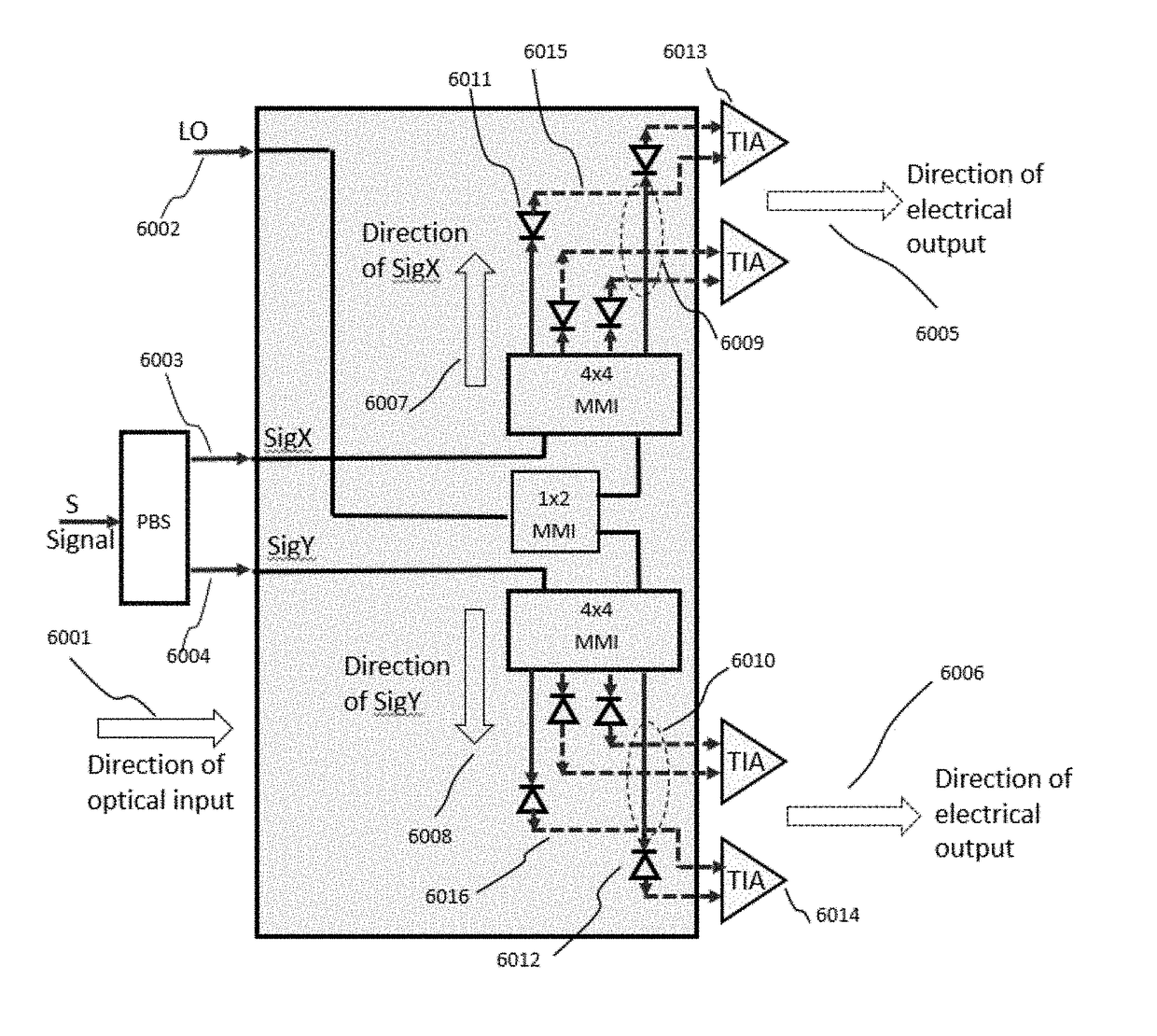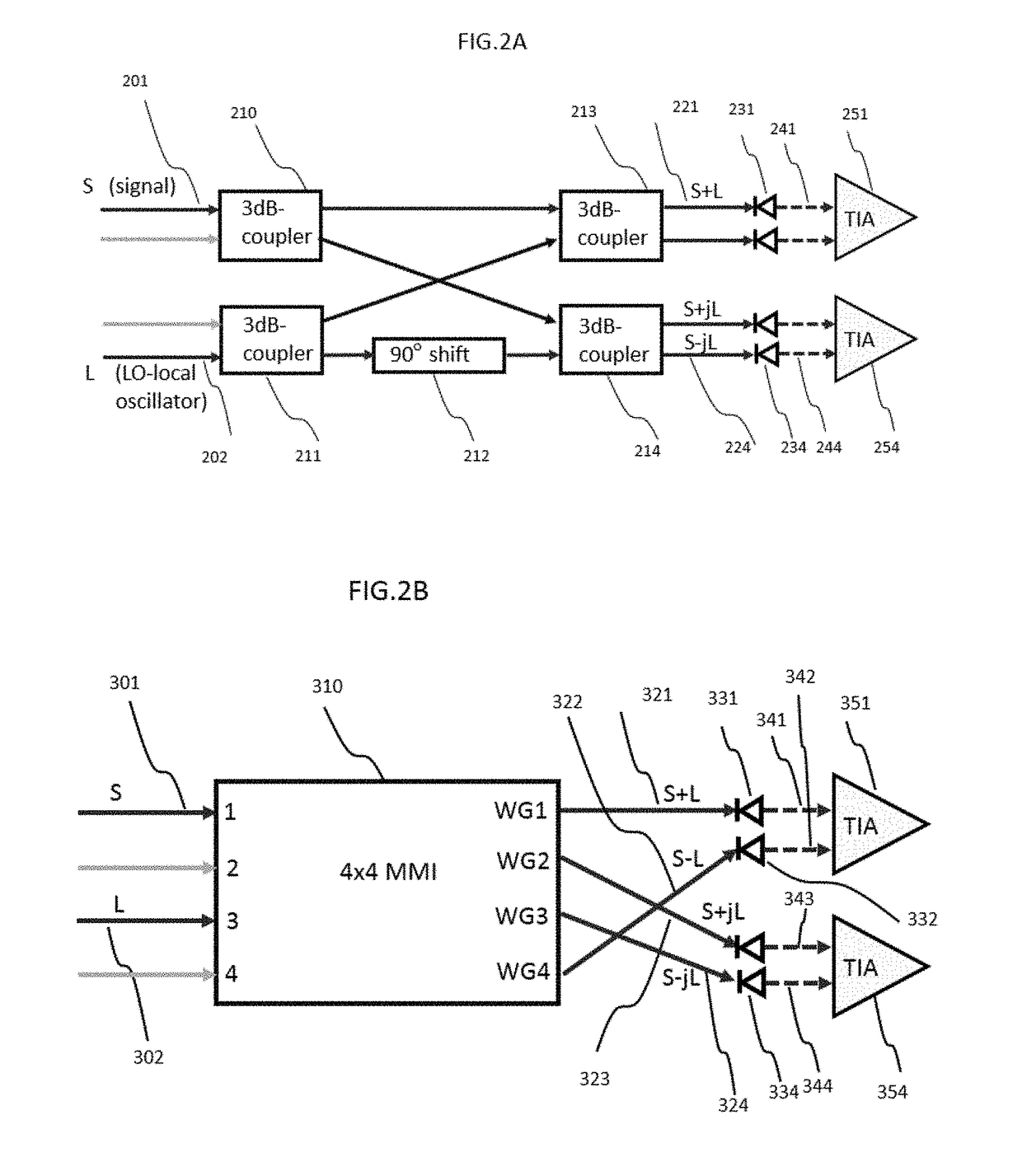Integrated coherent receiver having a geometric arrangement for improved device efficiency
a technology of integrated coherent receiver and geometric arrangement, applied in the field of integrated coherent receiver chip, can solve the problems of reducing chip size and propagation loss, and achieve the effect of efficient and reliable assembly process
- Summary
- Abstract
- Description
- Claims
- Application Information
AI Technical Summary
Benefits of technology
Problems solved by technology
Method used
Image
Examples
Embodiment Construction
[0042]Preferred embodiments of the present invention will be described below with reference to FIGS. 1-9. It is instructive to start the description with a review of the previous art.
[0043]FIG. 1 presents a schematic view of a generic 90° hybrid with two inputs: the signal S 101 and the local oscillator field L 102 are launched into the mixer 110 where both fields interfere and appear at the output of the MMI as in-phase components S+L 121 and S−L 122, and quadrature components S+jL 123 and S−jL 124.
[0044]FIG. 2A illustrates the situation where the hybrid is implemented by means of waveguide mode interference coupler which comprises four 3 dB couplers 210211213214 and a 90° phase shift 212. At the output of the hybrid the optical signals, marked as 221, 224, are directed into photodetectors 231, 224, where the light is detected and transformed into electrical signals 241, 244 which are directed into the TIAs 251, 254.
[0045]FIG. 2B presents the hybrid in the form of 4×4 MMI coupler 3...
PUM
 Login to View More
Login to View More Abstract
Description
Claims
Application Information
 Login to View More
Login to View More - R&D
- Intellectual Property
- Life Sciences
- Materials
- Tech Scout
- Unparalleled Data Quality
- Higher Quality Content
- 60% Fewer Hallucinations
Browse by: Latest US Patents, China's latest patents, Technical Efficacy Thesaurus, Application Domain, Technology Topic, Popular Technical Reports.
© 2025 PatSnap. All rights reserved.Legal|Privacy policy|Modern Slavery Act Transparency Statement|Sitemap|About US| Contact US: help@patsnap.com



